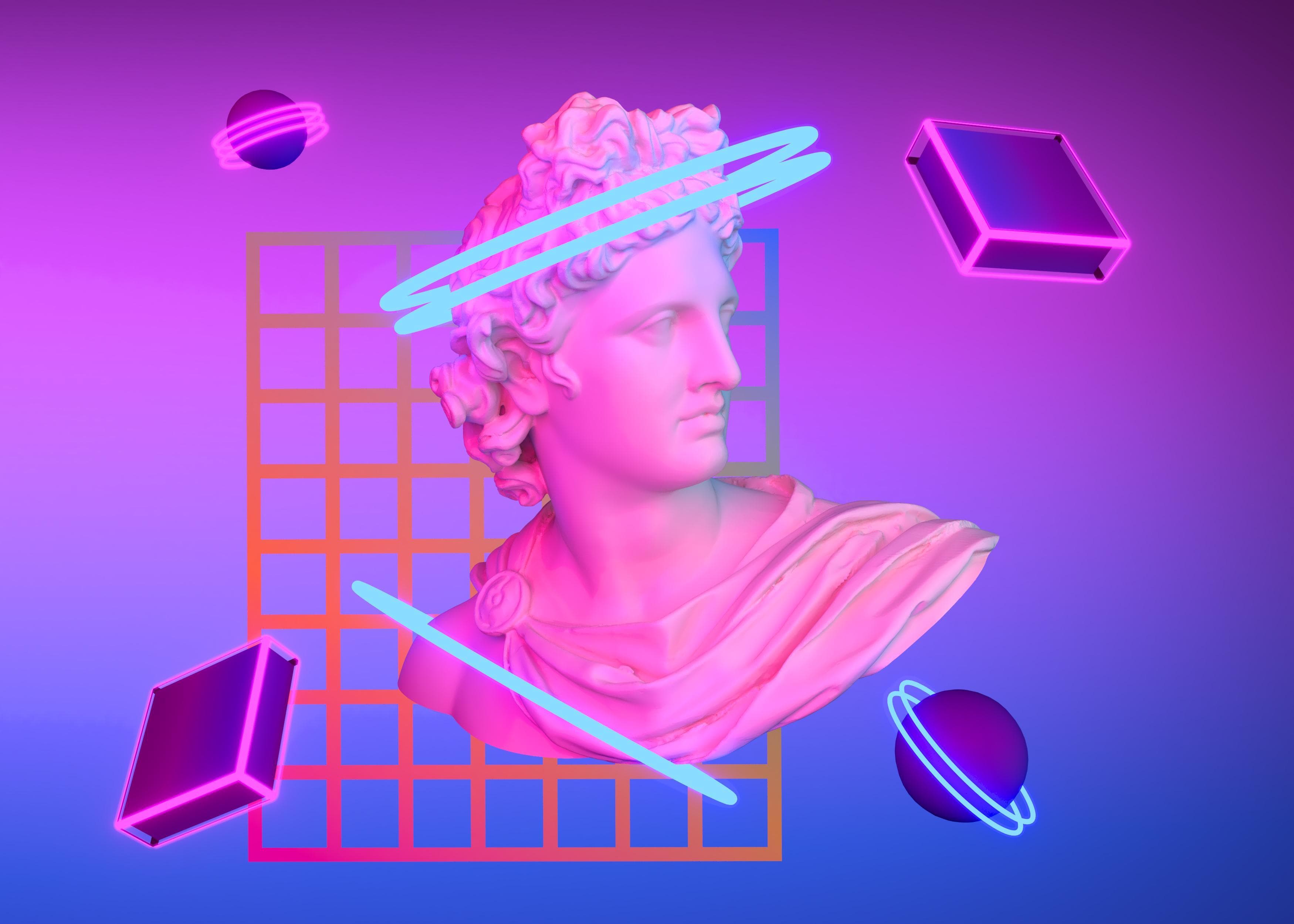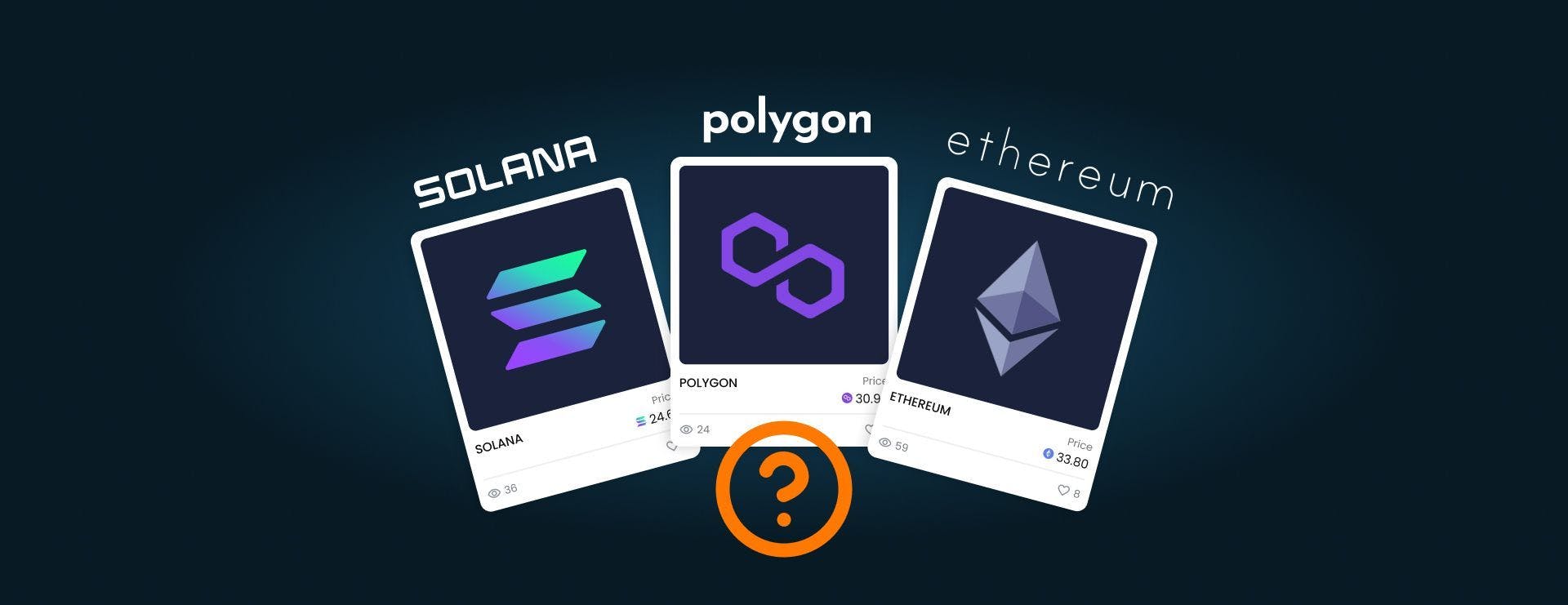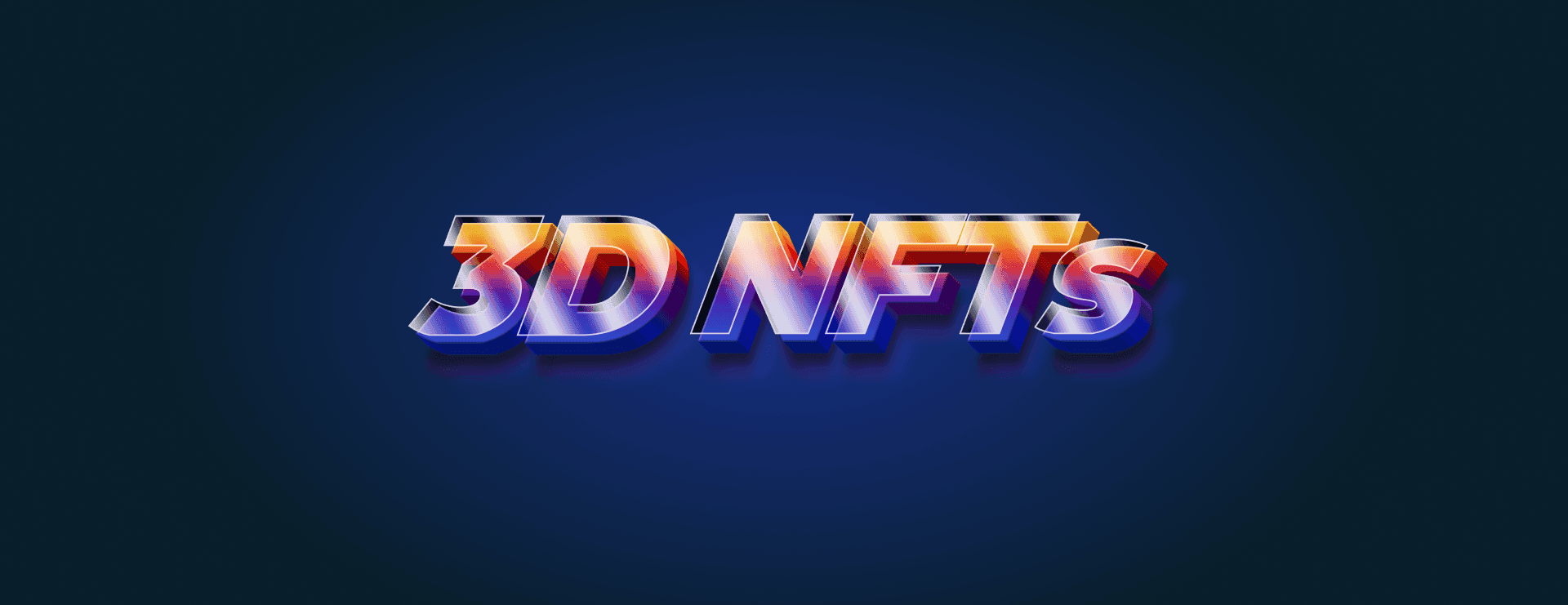Did you know that the world’s first NFT was minted by Kevin McCoy on Namecoin in 2014? It’s called “Quantum,” and was sold in 2021 for $1.47 million.
In a world where digital real estate is becoming as valuable as physical land, a revolution is brewing that is reshaping the creative landscape. Non-Fungible Tokens, or NFTs, are digital assets that have taken the world by storm. They unlocked unprecedented opportunities for artists, collectors, and entrepreneurs alike.
From rare collectible cards to unique digital masterpieces, NFTs are not only redefining ownership in the digital age but also fueling the growth of a multi-billion-dollar market. Dive into the fascinating world of NFTs as we explore their significance, and find out why you too should be paying attention to the most disruptive force in the creative industry today.
In this article, we will help you understand the whole NFT industry landscape, you will learn about some examples of successful NFT projects and the most popular NFT marketplaces. Also, we will explain the process of creating an NFT project, from start to finish, so stay tuned to learn more about this topic.
Defining Your NFT Project
To succeed in the world of NFTs, creators must plan their projects carefully. The first step to creating a successful NFT project is to identify your niche - the area that aligns with your interests and skills. This ensures you are passionate about the project and can use your talents effectively. Research market demand to identify trends and areas with growth potential.
Once you have chosen your niche, determine the purpose and goals of your project. This could range from creating a unique collectible series to utilizing NFTs for digital art ownership. Defining your target audience is crucial, as it helps you tailor your project to meet the needs and preferences of your ideal customer base. Demographics, psychographics, and behavioral factors are all important aspects to consider when pinpointing your target audience.
Creating Your NFT Collection
All most successful NFT projects start with developing a unique concept and design. Your collection should stand out in the crowded NFT marketplace by offering something different or appealing to a specific audience.
When creating high-quality digital assets, your team should focus on aesthetics, technical aspects, and storytelling. Engaging visuals, smooth animations, and compelling narratives will captivate potential buyers.
Collaborating with other artists or professionals can bring additional expertise and creative perspectives to your project. By partnering with others, you may be able to access new resources and improve the overall quality of your NFT collection.
Metadata and rarity traits are vital for collectibles, as they provide unique identifiers and distinguish your NFTs from others in the NFT marketplaces. Your team should plan metadata and rarity traits carefully to add value and intrigue to your collection.
Choosing the Right Team of Developers
A well-rounded team of developers is essential to bring your NFT development project to life. Look for developers with experience in blockchain technology, smart contracts, and the specific platform you plan to use for your NFTs, such as Ethereum or Binance Smart Chain.
The right team will be able to guide you through the technical aspects of creating and deploying your NFTs, ensuring a smooth launch and successful operation. In addition, strong communication and project management skills are essential to keep your project on track and avoid potential pitfalls along the way.
Timacum is a premier Blockchain and Web3 Digital product agency that offers customized, top-notch solutions by integrating its expert team with clients' teams to realize their visions. Discover our diverse range of projects, explore our portfolio, and witness firsthand the value we offer to our clientele.
Choosing the Right Blockchain Platform
The first step in launching a successful NFT project is selecting the right blockchain platform. Some of the most popular choices include:
- Ethereum
- Binance Smart Chain
- Solana
Read: Top 3 NFT Blockchains
Choosing the best platform for project is crucial, and each has its benefits. Ethereum is known for its huge developer community and solid ecosystem, while Binance Smart Chain offers lower fees and faster transactions. Meanwhile, Solana is making a name for itself with its impressive throughput and ability to scale. Make sure to choose the one that best fits your project's goals and needs.
When choosing a blockchain platform, your team should consider factors such as:
- transaction fees
- scalability
- ecosystem
High transaction fees can discourage users and businesses from participating in your project, while scalability issues may hinder the growth and long-term business success of your NFTs. It's also super important to have a bustling ecosystem packed with developer tools, resources, and support, as this makes integrating and running everything a breeze.
Once your team has picked blockchain platform, you'll need to set up a digital wallet to keep and handle your NFTs. If there are several founders involved in your project, it's a good idea to use a multisig wallet. This type of wallet needs multiple signatures to approve transactions, offering extra security for your assets and making sure everyone's on the same page when it comes to decision-making.
Read: 6 Ways Blockchain Can Make Your Business More Profitable
Minting Your NFTs
The minting process involves creating and adding your NFTs to the blockchain. Your team should get familiar with various minting options such as:
- whitelist
- raffle
- freemint
- potential network congestion issues
Each method has its pros and cons, and choosing the right one can impact the success of the launch.
Smart contracts are the backbone of NFTs, governing their creation, transfer, and ownership. The digital artwork is secured by NFT smart contracts, ensuring that ownership is easily verified and transferred. Some common standards include ERC-721, which supports unique, non-fungible tokens, and ERC-1155, which allows for both fungible and non-fungible tokens within a single smart contract itself. Understand the features and limitations of these standards to create the most suitable smart contracts for your project.
Read: Smart contracts vs. traditional contracts
Numerous tools and resources are available to facilitate the minting process, such as:
- OpenSea
- Rarible
- Mintable
Your team should research these platforms, their fees, and their features to determine which best suits your needs.
Marketing Your NFT Project
A strong community is vital to the success of any NFT project. Utilize platforms like Discord, Telegram, and social media:
- to engage with your community and potential buyers
- share updates
- gather feedback
A dedicated and passionate community will not only contribute to the project's success but also serve as advocates for your NFTs.
Leverage the power of influencers and create collaborations to increase your project's visibility and credibility. Your team should identify prominent figures in the NFT space and engage with them to showcase your project, create and collaborate with other artists or projects to create unique, limited-edition NFTs.
Generate buzz around your project by:
- crafting press releases
- blog posts
- securing media coverage
High-quality content will not only inform potential buyers but also establish your project's reputation and authority in the NFT space.
A visually appealing and user-friendly website is crucial for showcasing your NFTs and communicating your project's value proposition. Your team should ensure that the website is easy to navigate, mobile-responsive, and provides all the necessary information about your NFTs, including:
- their features
- unique selling points
- how to purchase them
Additionally, integrate your website with your social media channels and online community platforms to create a seamless experience for users, and offer a clear call-to-action to guide potential buyers in taking the next step. By creating an engaging and informative website, you'll effectively captivate your target audience and drive interest in your own NFT project.
Launching and Selling Your NFTs
Choosing the right marketplace for your NFTs is crucial to ensure maximum exposure and potential sales. Platforms like OpenSea, Rarible, and SuperRare offer unique features and cater to different audiences, so take the time to research and select the one that aligns with your creative vision and target market.
Developing an effective pricing strategy and selecting the appropriate auction model will help you attract collectors and maximize profits. When setting prices, your team should consider factors such as:
- scarcity
- utility
- demand
Also, choose between fixed-price sales, timed auctions, and auctions based on your project goals and audience preferences.
Promoting your NFT launch is essential to create buzz and generate interest. Use pre-sale events, giveaways, and countdown timers to build excitement among potential buyers, and leverage social media, influencers, and networking to spread the word about your unique creations.
Post-Launch: Maintaining and Growing Your NFT Project
Engaging with your community is vital to maintain interest in your project and foster loyalty. Communicate regularly with collectors, crypto enthusiasts, and fans through social media, online forums, and virtual events to:
- solicit feedback
- address concerns
- share updates on your progress
Continuously updating, expanding, and releasing new content keeps your NFT project relevant and fresh. Adapt to trends, explore new themes, and introduce novel features to maintain collectors' interest and attract new NFT enthusiasts to your growing ecosystem.
Monitoring secondary market sales and royalties helps you understand market dynamics and measure the success of your NFT project. Use this information to:
- refine your pricing strategy
- improve the appeal of your creations
- make secondary sales
- establish a sustainable income stream
Forming collaborations and partnerships with other creators, platforms, or brands can propel your NFT project to new heights. These alliances not only help you expand your reach and visibility but also foster innovation and facilitate long-term growth.
Understanding the NFT Landscape
NFT Use Cases
- Art and collectibles
NFTs have become a popular way for artists to tokenize and sell their digital artwork. These tokens prove ownership and provenance of the art, allowing artists to profit from their work while providing buyers with a unique digital asset. Also, another use case of NFTs is digital collectibles, such as trading cards, virtual stamps, or even virtual sneakers, which can be tokenized as NFTs. They provide a means for collectors to showcase their rare and unique assets, and even trade or sell them on secondary markets.
- Virtual real estate and Gaming
The rise of NFTs has ushered in a new era of opportunities within the digital sphere, allowing for the development of virtual spaces where users can buy, swap, and deal in virtual real estate and items. Notable instances of these online worlds are Decentraland, The Sandbox, and Cryptovoxels.
In addition, the gaming sector is capitalizing on the potential of NFTs by crafting unique in-game resources like characters, weaponry, and outfits that can be possessed, exchanged, or sold on secondary markets. This offers players a way to profit from their gaming experiences.
- Decentralized Finance
Non-fungible tokens have the potential to serve as a representation of digital asset ownership in Decentralized Finance applications. Examples of such assets may comprise tokenized securities or real estate. Due to the close relationship between NFTs and DeFi, there is expected to be substantial growth in this field in the future.
- Events
Non-fungible tokens have the potential to serve as representations of tickets for events or other activities, thus simplifying attendance management for event organizers and enabling them to monitor the individuals who have access to specific events.
Popular NFT Platforms and Marketplaces
OpenSea is a vast decentralized NFT marketplace offering a wide variety of NFTs for all budgets. Despite past security and trust issues, OpenSea remains popular due to its user-friendly design, reasonable fees, and educational content. It supports:
- multiple blockchains
- payment options
- gas-free transactions
Rarible is an accessible NFT marketplace for creators and collectors, offering a governance token (RARI) for platform decisions. It supports:
- multiple blockchains and wallet connections
- allowing for reduced gas fees
- gas-free minting
- creator/collector validation
SuperRare is an NFT platform dedicated to high-quality digital art, carefully curating its collection by selecting artists and ensuring each piece is unique. The platform partners with the traditional art world and provides royalty payments to artists.
Foundation is an NFT marketplace designed for digital art enthusiasts, offering a vast selection of art NFTs and royalty payments to original creators. Although it can be costly, the platform is easy to use and excellent for minting NFTs.
Nifty Gateway is a centralized NFT marketplace featuring exclusive drops and sales from renowned artists and brands. With custodial wallet options and support for credit/debit card payments, the platform aims to make NFT transactions more accessible while reducing or eliminating gas fees.
Notable NFT Projects and Success Stories
Bored Ape Yacht Club
The Bored Ape Yacht Club (BAYC) is a compilation of 10,000 unique digital tokens or NFTs, each depicting a one-of-a-kind Bored Ape character with its individual traits and backdrop. In April 2021, Yuga Labs introduced BAYC, and it rapidly gained immense popularity, establishing itself as a highly sought-after NFT collection. Owning a BAYC NFT grants membership to an elite club and entitles you to exclusive benefits, such as access to special events, digital merchandise, and additional perks. At the moment, you can buy one BAYC for around $83, 000.
Beeple
Beeple, also known as Mike Winkelmann, is a digital artist who gained significant fame in the world of NFTs. He is best known for his "Everydays" project, where he has been creating and posting a new piece of digital artwork every day since 2007. In March 2021, Beeple made headlines when his piece, "Everydays: The First 5000 Days," was auctioned by Christie's for a record-breaking $69 million. This sale established Beeple as one of the most prominent figures in the NFT art world.
CryptoPunks
CryptoPunks is a collection of 10,000 pixel art characters created by software developers Matt Hall and John Watkinson from Larva Labs in 2017. Each CryptoPunk is a unique 24x24 pixel character, generated algorithmically with distinct traits, accessories, and backgrounds. CryptoPunks is considered one of the earliest and most iconic NFT projects on the Ethereum blockchain, and it has inspired many other NFT collections. The rarity and historical significance of CryptoPunks has led to high demand and, in some cases, multimillion-dollar sales.
Read: Everything You Need to Know About 3D NFTs
If your goal is to establish a thriving NFT project and possibly make it onto a list like this one, continue reading this article and adhere to the steps outlined.
Conclusion
To recap, starting a successful NFT project involves selecting the right marketplace, developing a pricing strategy, promoting your launch, engaging with your own community members, and continually updating and expanding your offerings. A successful NFT project ensures the artwork's value is upheld, protecting both the artist's interests and the collector's investment.
Keep a close eye on secondary market sales and royalties, and don't shy away from collaborations and partnerships that can help your project flourish.
Embark on your NFT journey with enthusiasm and creativity, as this exciting world is ripe with opportunities for artists and collectors alike. Embrace the potential of blockchain technology to revolutionize art and commerce, and let your imagination run wild as you create, share, and profit from your very own NFTs.




